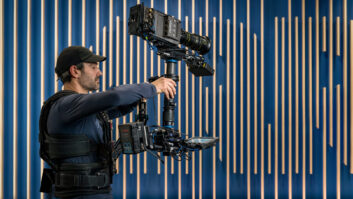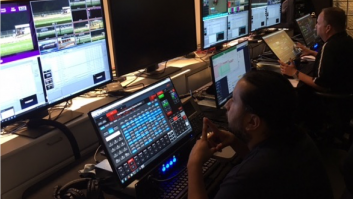Waitress, the Musical — Live on Broadway! premiered at the Tribeca Film Festival earlier this month.
It is a live stage recording of Sara Bareilles and Jessie Nelson’s 2015 musical of the same name, which has wowed audiences both on Broadway and in London’s West End.
The story follows waitress Jenna Hunterson, stuck in an unfulfilling marriage in a small town, who finds solace in baking and dreams of winning a baking contest in a nearby city to escape her mundane life.
Directed by Brett Sullivan, the film has been edited by David Tregonig who used Premiere Pro and Frame.io, to reflect and enhance the authenticity of the original production.
How and where did you first learn to edit?
I learned to edit audio long before I was editing video. ProTools and Logic were my editing software choices before I began my career in post production.
Editing videos I pretty much learned on the job, although I think it’s always come quite instinctually to me, and I’ve always enjoyed crafting stories. From the beginning, our creative directors would gradually hand me bigger and more challenging projects to get my teeth into.
To start with I was editing in Final Cut Pro 7 before Apple ditched it, we then jumped ship to Adobe Premiere Pro which was a pretty seamless transition for us.
What were some specific post-production challenges you faced that were unique to this project? How did you go about solving them?
As with many of the other feature-length multicam projects I’ve worked on, one problem we often run into is the sheer size of the project files. In my offline editing projects I’d end up with nearly 300 sequences with anything up to 30 video layers. This meant that we’d need to periodically break out the working project files into smaller off-shoots until we finally combined sequences into our main ‘compile’ projects.
By the time we’d online and graded, project files became much more manageable.
What tools did you use on this project and why did you originally choose them?
For Waitress, I guess the main Adobe features we used were multicam sync at the beginning of the projects, EDL, XML and AAF round-tripping and also the frame.io integration.
How did you use Frame.io?
We’ve been using frame.io pretty much since the beginning. It’s simplified the process of both internal and client feedback immensely. The ability to import time coded comments as markers directly into a Premiere sequence is really handy, and the ability to password protect files is also a great addition.
If you could share one tip about Premiere Pro, what would it be?
If I could share one tip about Premiere Pro it would be ‘project preparation’ i.e. keep your bins organised. I work with a team of editors and I cannot overstate how much time can be saved if a project is properly organised and labeled. I always approach a project with the mindset of “If I wasn’t familiar with this project, would I clearly be able to see what is what when I open it?” Project templates and consistent naming conventions are key to a smooth post production workflow.
Tell us about a favourite scene or moment from the film and why it stands out to you.
I think for me it has to be Sara Bareilles’s incredibly powerful performance of She Used To Be Mine. We filmed this pretty much as a oner (long take), although we ended up combining some elements from the live show as well because the audience’s reaction at the end was huge. It was an absolute privilege to capture this raw emotional performance from Sara.







